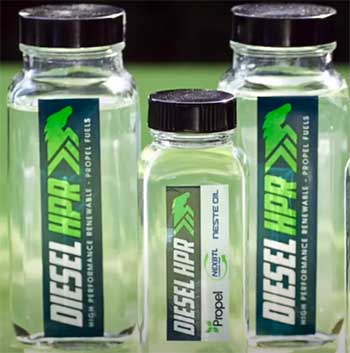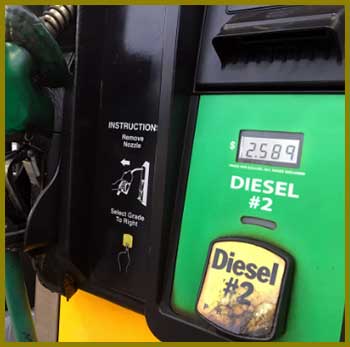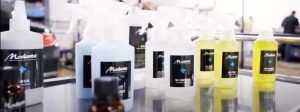In today’s world, where fuel prices and sustainability are top concerns, diesel HPR (High Performance Renewable) and diesel #2 have emerged as two popular options for vehicle owners. But what sets these fuels apart?
In this article, we’ll dive into the key differences between diesel HPR and diesel #2, their benefits and drawbacks, and answer some frequently asked questions. By the end, you’ll have a clear understanding of which fuel is right for you.
A Brief Comparison Table
| Feature | Diesel HPR | Diesel #2 |
| Raw Material | 100% renewable sources | Crude oil |
| Greenhouse Gas Emissions | Up to 80% reduction | Higher emissions |
| Cetane Rating | 65-80 | Lower than Diesel HPR |
| Engine Maintenance | Less carbon buildup, reduced maintenance | Potential for more carbon buildup and maintenance |
| Availability | Limited, mainly in urban areas | Widely available across North America |
| Price | Generally more expensive | Generally cheaper |
| Cold Weather Performance | Similar to diesel #2 | Better than diesel #1, may require additives in extremely cold temperatures |
| Compatibility | Suitable for most diesel engines | Suitable for most diesel engines and applications |
Diesel HPR: A Green Alternative

Diesel HPR is a renewable fuel derived from 100% renewable and sustainable raw materials, such as vegetable oils, animal fats, and used cooking oil.
Its production process involves hydrotreating these feedstocks to remove impurities, resulting in a clean and high-quality fuel.
The primary selling point for diesel HPR is its eco-friendliness – it can reduce greenhouse gas emissions by up to 80% compared to traditional diesel fuels.
Pros of Diesel HPR
- Environmentally friendly: As mentioned, diesel HPR significantly reduces greenhouse gas emissions. This makes it an excellent option for those looking to minimize their carbon footprint.
- High Cetane rating: Diesel HPR boasts a high cetane rating, typically between 65-80. Higher cetane numbers result in better combustion, leading to improved performance and reduced engine wear.
- Less engine maintenance: Diesel HPR’s cleaner combustion process leads to less carbon buildup in the engine, which can translate to fewer maintenance issues and longer engine life.
Cons of Diesel HPR
- Availability: Diesel HPR is not as widely available as diesel #2. This may make it challenging to find fueling stations that offer it, especially in rural areas.
- Price: Diesel HPR can be more expensive than diesel #2, depending on the region and the current market prices for renewable feedstocks.
Also Read: Problems With Propel HPR Diesel.
Diesel #2: The Traditional Workhorse

Diesel #2, also known as ultra-low sulfur diesel (ULSD), is the most commonly used diesel fuel in North America.
Derived from crude oil, diesel #2 is used in a wide range of applications, including transportation, agriculture, and heavy machinery.
The primary advantage of diesel #2 is its widespread availability and lower price, but it comes at the cost of higher emissions compared to diesel HPR.
Pros of Diesel #2
- Availability: Diesel #2 is widely available at fueling stations across North America. This makes it easy to find when you need to refuel.
- Price: Generally, diesel #2 is cheaper than diesel HPR, making it a more economical choice for those on a budget.
- Versatility: Diesel #2 is suitable for use in a wide range of applications, from transportation to heavy machinery.
Cons of Diesel #2
- Higher emissions: Diesel #2 produces more greenhouse gas emissions than diesel HPR, making it less environmentally friendly.
- Lower cetane rating: Diesel #2 typically has a lower cetane rating than diesel HPR, which can result in poorer combustion and increased engine wear.
Also Read: My Take on Dan’s Diesel Performance.
Frequently Asked Questions (FAQs)
HPR diesel, or High Performance Renewable diesel, is a clean and environmentally friendly alternative to traditional diesel fuels. It is produced from 100% renewable and sustainable raw materials, such as vegetable oils, animal fats, and used cooking oil. Diesel HPR reduces greenhouse gas emissions by up to 80% compared to traditional diesel fuels.
Yes, diesel #2 is a type of diesel fuel. It is also known as ultra-low sulfur diesel (ULSD) and is the most commonly used diesel fuel in North America. Diesel #2 is derived from crude oil and is used in various applications, including transportation, agriculture, and heavy machinery.
Diesel #1, also known as kerosene, has a lower viscosity and is more suitable for colder climates, as it has better cold-weather performance. Diesel #2, on the other hand, is more commonly used and is suitable for most applications. In general, you should use diesel #2 unless you live in a region with extremely cold temperatures, where diesel #1 may be more appropriate.
Yes, you can use diesel #2 in a diesel truck. In fact, diesel #2 is the most commonly used diesel fuel for trucks and other heavy-duty vehicles in North America. However, if you’re looking for a more environmentally friendly option, consider using diesel HPR, which offers similar performance while significantly reducing greenhouse gas emissions.
There are several different grades of diesel fuel, including:
Diesel #1: Also known as kerosene, diesel #1 has a lower viscosity and is more suitable for colder climates due to its better cold-weather performance.
Diesel #2: The most commonly used diesel fuel in North America, diesel #2 (or ultra-low sulfur diesel) is suitable for a wide range of applications, including transportation, agriculture, and heavy machinery.
Diesel HPR: High Performance Renewable diesel is an environmentally friendly alternative to traditional diesel fuels, produced from 100% renewable and sustainable raw materials. Diesel HPR reduces greenhouse gas emissions by up to 80% compared to traditional diesel fuels.
Conclusion
When it comes to choosing between diesel HPR and diesel #2, it ultimately depends on your priorities and specific needs.
Diesel HPR is an excellent choice for those looking to reduce their carbon footprint and improve engine performance, but it may come at a higher cost and limited availability.
Diesel #2, on the other hand, is more widely available and generally cheaper but comes with higher emissions.
In summary, both diesel HPR and diesel #2 fuels have their advantages and disadvantages. By considering factors such as cost, availability, environmental impact, and performance, you can make an informed decision about which fuel is best suited for your needs.



